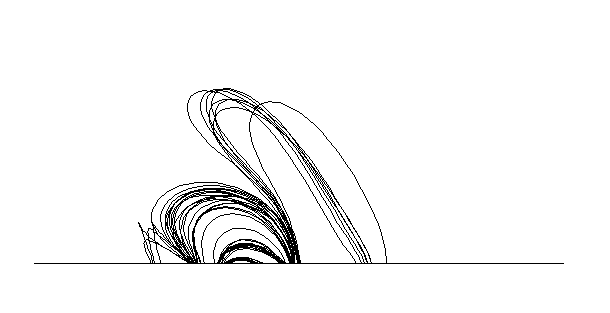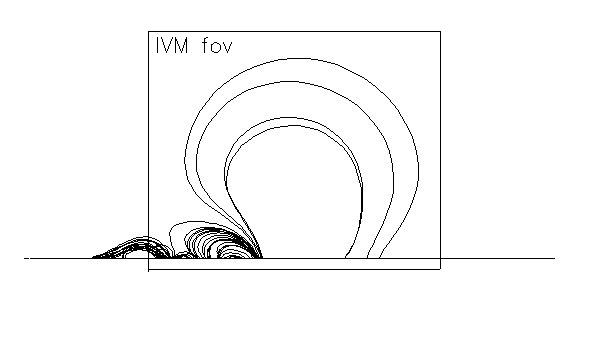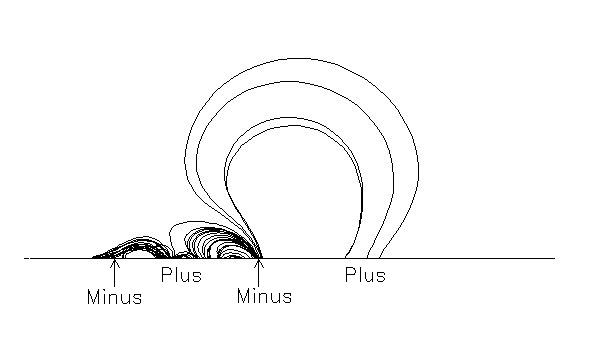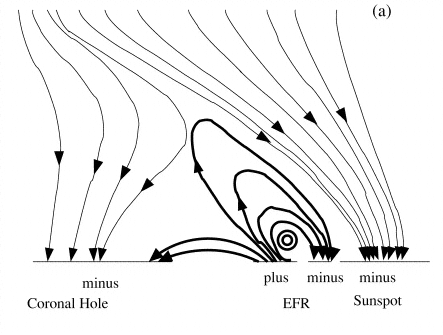

|
Our first nonlinear force-free (nlff)
reconstruction of active region 8210 (AR8210) was made for a field-of-view of
120"x120" (see Régnier, Amari, Canfield 2002, ESA-SP-505, p.65). But as
we discussed during the last MURI meeting held in Berkeley, this restricted
field-of-view is not adequate to understand the entire magnetic configuration of
AR8210 (see Sterling et al. 2001, ApJ, 561, 1116): the
field-of-view should be at least 3 times larger. We have done this |
 |
Fig. 1 (click to enlarge): nlff reconstruction of AR8210 using the IVM field-of-view at 19:40 UT before a series of C-class flares |
 |
Fig. 2 (click to enlarge): IVM field-of-view surrounding by MDI data |
 |
Fig. 3 (click to enlarge): Same as Fig. 2 with the same polarities as indicated in Fig. 4 |
 |
Fig. 4 (click to enlarge): Sterling's cartoon for the M-class flare occuring in AR8210 at 22:40 UT |
MURI-MSU Nugget April 2003
Stéphane Régnier, Richard Canfield, Dana Longcope